Magento 2 Odoo ERP Integration: Streamlining Inventory, Orders & Finance
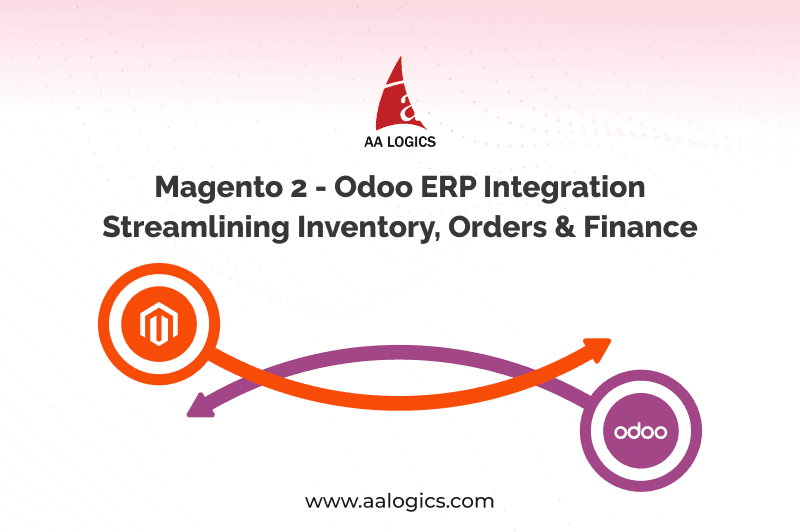
Introduction
Running an online store can get messy if your systems don’t talk to each other. Many businesses use Magento 2 for their storefront and Odoo ERP for inventory, orders, and finances. The problem? Manual updates, mistakes, and wasted time.
That’s where Magento 2 Odoo ERP integration comes in. By linking your store and ERP, you get two-way synchronization—everything updates automatically, saving time and reducing errors.
In this blog, we’ll show you how integrating Magento 2 with Odoo can make your operations smoother, faster, and more accurate.
Understanding Magento Odoo Connector for Seamless Integration
Think of a Magento Odoo connector as a bridge between your online store and your ERP system. It keeps everything in sync without you having to lift a finger.
Here’s Why It’s Useful:
- Moves data automatically between Magento and Odoo
- Cuts down mistakes and duplicate work
- Gives you real-time visibility of orders, inventory, and finances
- Makes scaling your business easier
Two-Way Synchronization Magento Odoo: Key Features
Two-way sync means changes in Magento or Odoo instantly show up in the other system.
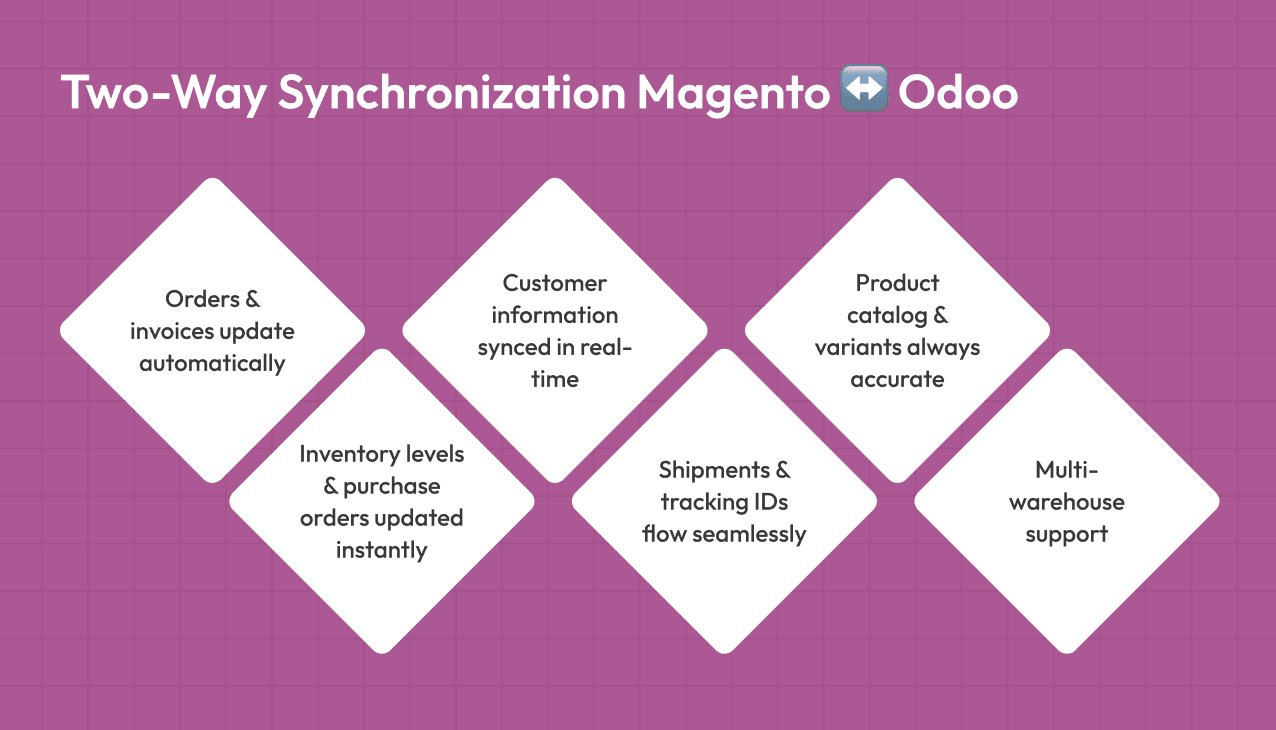
What Gets Synced:
- Orders & invoices
- Customer information
- Inventory levels and purchase orders
- Shipments and tracking IDs
- Multiple warehouses
Tip: Draw a simple flow diagram: Magento ↔ Odoo. It makes the process crystal clear.
Magento ERP Integration Benefits for E-commerce Businesses
Connecting Magento with Odoo isn’t just tech talk—it actually makes running your store easier.
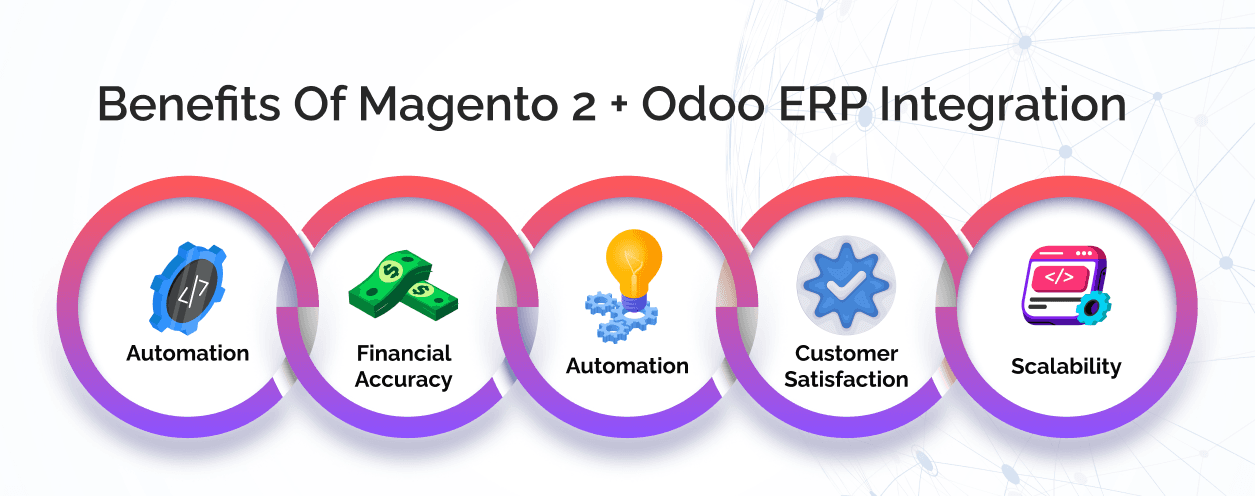
Automation of Business Processes
- Orders and invoices are automatically processed (Automated Order Processing Magento Odoo)
- Less manual work for your team
- Staff can focus on growth and customers
Better Inventory Management
- Magento Odoo Inventory Sync keeps stock levels accurate
- No more overselling or stockouts
- Manage multiple warehouses effortlessly
Accurate Finance & Reporting
- Invoices generated automatically in Odoo
- Financial reporting updates in real-time
- Revenue and accounting are always correct
Happy Customers
- Faster order processing
- Transparent order tracking
- Fewer errors, happier shoppers
Scalability & Flexibility
- Works with multiple stores and warehouses
- Syncs configurable products
- Grows with your business
Real-Time Data Sync Magento Odoo: How It Works
Real-time sync makes sure both Magento and Odoo always have the latest info.
How It Works:
- Data flows both ways between Magento and Odoo
- Orders, invoices, products, and inventory update automatically
- Conflicts are handled with rules and settings
- Sync frequency can be real-time, hourly, or daily
Odoo Magento Sync Features You Should Know
- Multi-stock and warehouse support
- POS integration with Odoo
- Configurable product syncing
- Automatic tax and payment mapping
Pro Tip: Always check API keys and software versions to avoid sync errors.
Magento Odoo Integration Guide: Step-by-Step Implementation
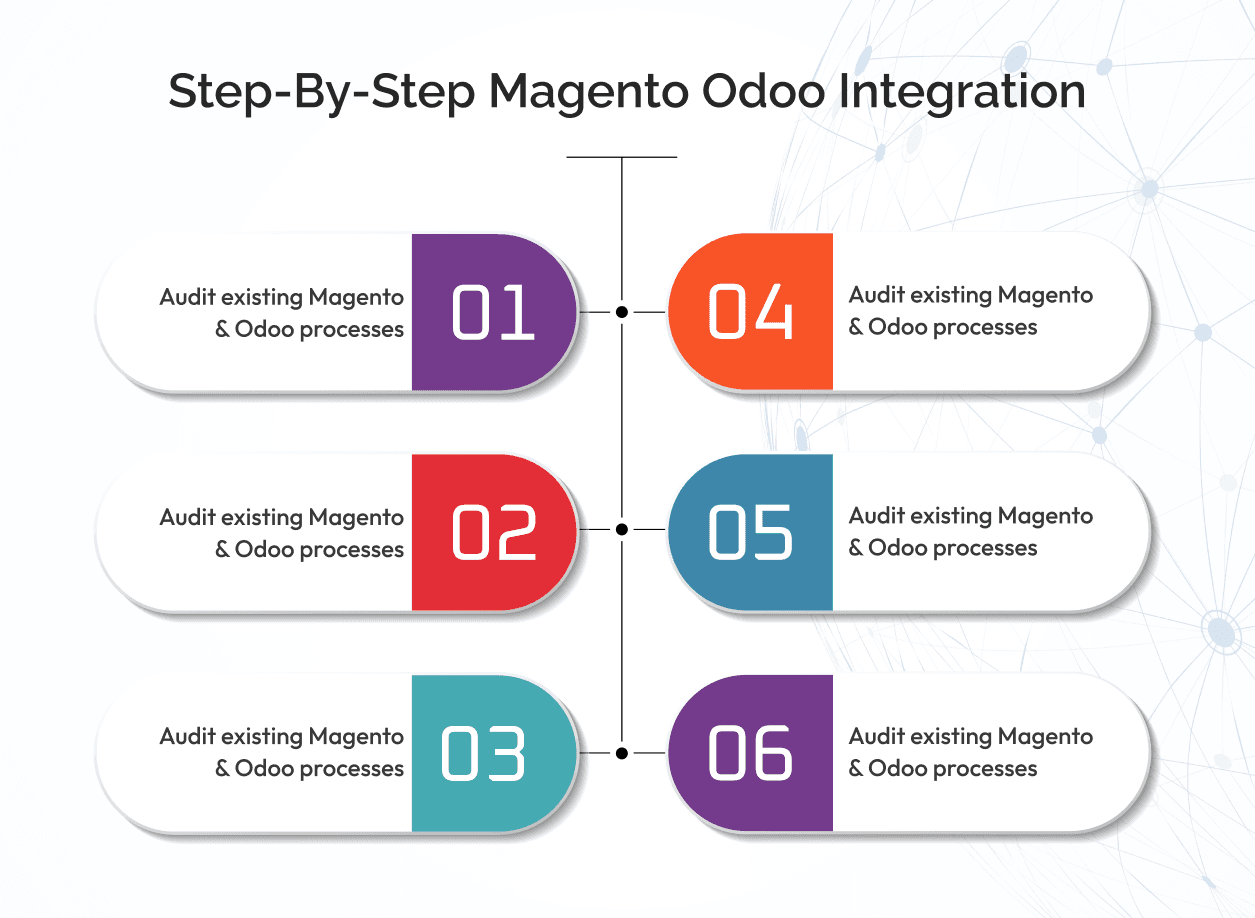
Getting Magento 2 and Odoo to play nicely together needs planning. Here’s a simple approach
Step-By-Step Tips:
- Audit your current Magento & Odoo processes
- Decide which system is the “master” for each type of data
- Test with a small batch of data first
- Check logs and make sure data matches
- Scale up to your full catalog and stores
- Train your team on new workflows
Common Challenges and How to Solve Them
- Compatibility Issues:Make sure Magento 2 and Odoo versions work together
- Data Conflicts:Set rules to handle duplicates or errors
- Performance:Optimize API calls and use incremental sync
- Security:Secure connections, encryption, and GDPR compliance
- Maintenance:Keep logs, update regularly, and monitor syncs
Magento Odoo Integration Extension: AAlogics Solution
Want a smooth integration? The AAlogics Two-Way Synchronization Extension makes it simple.
What It Does:
- Syncs orders, invoices, products, customers, and shipments in real-time
- Handles multiple warehouses and stores
- One-time payment, lifetime updates, 30-day support
- Easy setup with logs to monitor everything
ROI and Business Impact
- Save Time:Less manual data entry
- Fewer Errors:Orders, invoices, and shipments are correct
- Better Customer Experience:Faster fulfillment, happier shoppers
Case Study Example
- 40% reduction in manual order entry
- 30% faster order processing
- Accurate stock management across warehouses
- Repeat customers increased due to reliable fulfillment
Conclusion: Optimize Your E-commerce Operations with Magento 2 + Odoo ERP
Integrating Magento 2 with Odoo ERP isn’t just technical—it’s a business game-changer.
Key Takeaways:
- Two-way sync saves time and reduces mistakes
- Automation improves efficiency and accuracy
- Real-time updates keep inventory and orders correct
- Scalable solution works across stores and warehouses
Key Takeaways:
- Try AAlogics’ Two-Way Synchronization Extension
- Book a free consultation/demo
See how Magento 2 Odoo ERP integration can transform your operations
FAQs on Magento Odoo ERP Integration
Which versions of Magento and Odoo are supported?
Usually Magento 2.x and Odoo 13–16. Check compatibility first.
What’s the difference between one-way and two-way sync?
Two-way sync updates both systems automatically. One-way only updates in a single direction, which can cause errors.
Can I automate order processing?
Yes. Automated Order Processing Magento Odoo takes care of orders, invoices, and tracking.
How secure is the integration?
Secure API connections, encryption, and GDPR compliance keep your data safe.
Can I integrate multiple warehouses?
Absolutely. Magento Odoo Inventory Sync handles multiple warehouses with real-time stock updates.
What if sync errors occur?
Use logs, set conflict rules, and rely on support from your extension provider.
Do staff need training?
Minimal. Just show them the new workflows and how to monitor logs.
What testing and sandbox steps are required before production clearance?
You must validate UBL XML, sign/stamp in the sandbox, pass ZATCA validation, then request production access. ZATCA requires sandbox testing: generate UBL XML from Magento, apply cryptographic stamp and QR, submit to the sandbox for schema and business validations, and only after passing move to production. Keep test logs for audit readiness.
Featured Articles

What’s Changing in Digital Marketing Right Now — And How Smart Brands Are Adapting
Read More
How Riazone Transformed Its Slow Magento Storefront Into a Lightning-Fast Graph Commerce Experience — In Record Time
Read More
The Future of Shopify Store Management: Metaobjects Shopify and Personalization Explained
Read More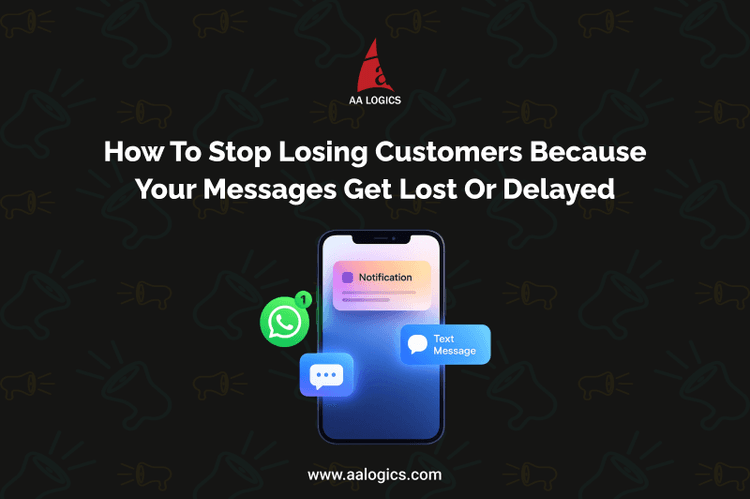
SMS, WhatsApp & Push Notifications in Magento 2: How to Stop Losing Customers Because Your Messages Get Lost or Delayed
Read More